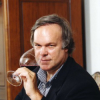Robert M. Parker, Jr.

Robert M. Parker, Jr.
Robert M. Parker Jr.is a leading U.S. wine critic with an international influence. His wine ratings on a 100-point scale and his newsletter The Wine Advocate, with his particular stylistic preferences and notetaking vocabulary, have become influential in American wine buying and are therefore a major factor in setting the prices for newly released Bordeaux wines. He is widely acknowledged to be the most widely known and influential wine critic in the world today...
NationalityAmerican
ProfessionCritic
Date of Birth23 July 1947
CountryUnited States of America
In the wine world, crusaders would have wine consumers believe that the only wines of merit are something completely indefinable but which they call 'authentic' or 'natural.'
I like white wine when it's young and vigorous. I don't think you should cellar white wine at all, unless it's white Burgundy, and definitely not nonvintage Champagne.
As far as vintage Champagne goes, I loved 1990; it's a great, great vintage. I bought a lot of 1990 Blanc de Blancs Champagne - my favorite kind - and I plan on drinking it all by 2005.
You can't simplify my taste and say, 'Parker likes big wines,' because it's just not true.
Back in 1990, there were fewer than 20 wineries in and around Paso Robles, a farming community midway between San Francisco and Los Angeles. Most of the wines produced there were rustic, highly tannic and alcoholic, with little charm or finesse.
I think the Japanese love young, tannic red wines much more than most Americans do. Perhaps it is because Asians have a great fondness for tea, and tea is a very tannic beverage. Therefore a young, tannic red wine is something familiar to an Asian palate.
As I've grown older, I've developed an appreciation for wines that are immediately gratifying but that can also provide great satisfaction over several years.
The best Chateauneuf-du-Papes are among the most natural expressions of grapes, place and vintage. Chateauneuf-du-Pape vineyards are farmed organically or biodynamically, and the region's abundant sunshine and frequent wind (called 'le mistral') practically preclude the need for treating the fields with herbicides or pesticides.
When I put my nose in a glass, it's like tunnel vision. I move into another world, where everything around me is just gone, and every bit of mental energy is focused on that wine.
Wine to me is something that brings people together. Wine does promote conversation and promote civility, but it's also fascinating. It's the greatest subject to study. No matter how much you learn, every vintage is going to come at you with different factors that make you have to think again.
What's important in a cellar is having wines that have a broad range of drinkability, which California Cabernet does. Wines with a broad range of drinkability give you a lot of flexibility; they are the sort of wines that make me feel secure. I think of my wine cellar as security - if the apocalypse comes, I can just go down to the cellar.
I always said your best palate is your own, not mine. I'm a guidepost.
It may seem hard to believe - unless you sit down and taste them - but some of the world's greatest sweet wines are made in the Rutherglen region of Victoria, Australia.
Although the French appellation system has its roots in the 1923 system created in Chateauneuf-du-Pape by Baron Le Roy, proprietor of the renowned Chateau Fortia, Chateauneuf-du-Pape never developed a reputation for quality or achieved the prestige enjoyed by such regions as Burgundy and Bordeaux.